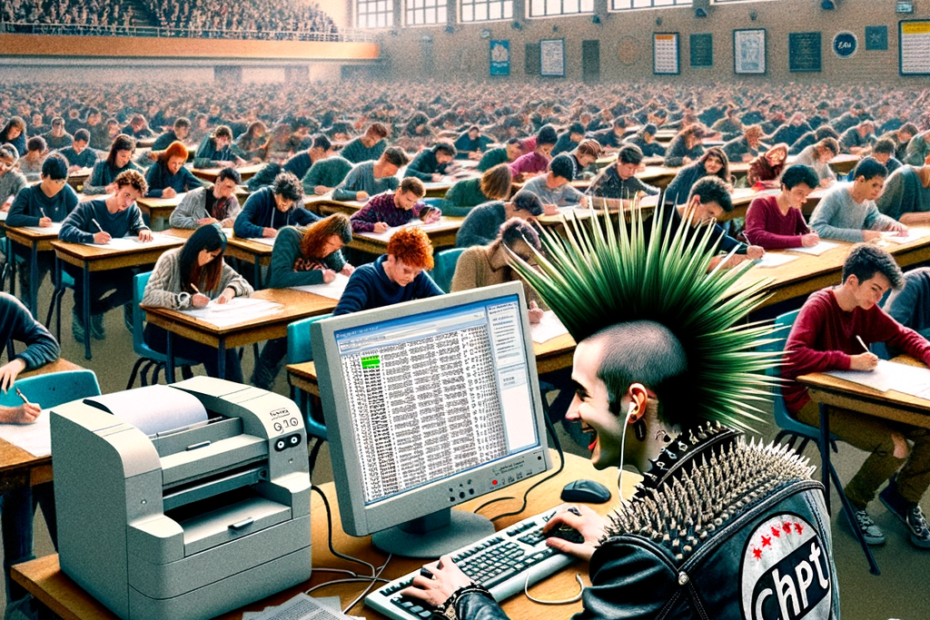Universities have long relied on assignments, primarily essays and exams, to assess student learning. These methods have served a purpose, providing a snapshot of knowledge acquisition and analytical skills. However, the landscape of learning is evolving rapidly, and the rise of Generative Artificial Intelligence (GAI) tools like ChatGPT presents a significant challenge to the validity of traditional assessment practices. This article examines the limitations of current methods in light of GAI and proposes solutions for a more robust and future-proof assessment system.
The Problem: Why Traditional Assessments Fall Short
The core issue with traditional assessments lies in their susceptibility to manipulation by GAI. These tools are adept at mimicking human knowledge and writing styles. A student could potentially feed an essay prompt on the causes of the French Revolution into a GAI and receive a well-structured, grammatically correct essay that reflects a basic understanding of historical events and figures. This raises concerns about the authenticity of student work and the true measure of their learning.
Beyond the specter of GAI-generated essays, traditional assessments have inherent limitations:
- Limited Scope: Essay-based assessments often focus on content recall and regurgitation of memorized facts. For instance, a history exam might ask students to list the key events leading up to World War I. While memorization has its place, such assessments struggle to comprehensively evaluate critical thinking skills, originality of thought,and the ability to apply knowledge to solve problems. Imagine a more effective assessment that asks students to analyze the long-term consequences of the war on European society, requiring them to synthesize information,identify cause-and-effect relationships, and construct a well-supported argument.
- Susceptibility to Plagiarism: While plagiarism detection tools exist, GAI could potentially be used to create new and undetectable forms of plagiarism, further undermining the integrity of the assessment process. For instance, a student might paraphrase a GAI-generated essay, believing they have outsmarted the system.
- Static and Detached from Learning: Traditional assessments are often summative, administered at the end of a learning module. This snapshot approach fails to capture the full journey of student learning and their development of key skills over time. Imagine a literature course that solely relies on a final essay analyzing a single novel. A more effective approach could involve shorter, scaffolded writing assignments throughout the semester, allowing students to build their analytical skills and receive ongoing feedback.
Rethinking Assessment: Solutions for the AI Era
The advent of GAI necessitates a paradigm shift in how universities approach assessment. Here are some potential solutions:
- Shifting the Focus: Assessments should move away from content recall and towards measuring higher-order thinking skills. This could involve tasks such as analyzing complex scenarios, proposing solutions to real-world problems, or constructing creative arguments supported by evidence. For example, a science course could present students with a simulated environmental crisis and ask them to develop a research plan, analyze data, and propose evidence-based solutions.
- Integrating Technology: GAI can be harnessed for good. Universities can explore using GAI tools to create dynamic, interactive assessments. Imagine scenario-based simulations where students make decisions and grapple with real-world consequences in a virtual environment. These assessments could be tailored to individual strengths and weaknesses, providing a more nuanced picture of student learning. For instance, a business ethics course could utilize a GAI-powered simulation where students navigate ethical dilemmas within a corporate setting.
- Oral Examinations and Presentations: Encouraging live discussions and presentations allows for a deeper exploration of student understanding. Faculty can delve into the thought processes behind student work, assess communication skills, and identify areas for improvement.
- Portfolio-Based Assessments: Moving beyond single high-stakes assessments, universities could implement portfolio-based assessments that compile a broader range of student work. This could include drafts, research proposals, presentations, and reflections, providing a richer and more complete picture of student learning. For example, an art history course could incorporate sketches, written analyses of specific artworks, and a final research paper on a chosen artist.
- Promoting Academic Integrity: The onus is on universities to educate students on the responsible use of technology and the importance of original thought. This can be achieved through workshops, clear guidelines, and fostering a culture of academic integrity where students understand the value of authentic learning.
In conclusion, GAI presents a significant challenge to traditional assessment methods. However, it also offers an opportunity for universities to create a more dynamic and effective system that fosters critical thinking, problem-solving,and communication skills – the hallmarks of a truly valuable education. By embracing technology and rethinking assessment practices, universities can ensure that student learning remains the cornerstone of higher education, even in the age of artificial intelligence.
